The Camino de Finisterre, often considered an extension of the famous Camino de Santiago, is a pilgrimage route that leads from Santiago de Compostela to the rugged coast of Finisterre (Fisterra in Galician), once thought to be the end of the known world.
This journey, steeped in history and natural beauty, offers pilgrims a chance to continue their spiritual and physical journey beyond Santiago. Here are the key stops along the Camino de Finisterre that you shouldn’t miss.
Santiago de Compostela
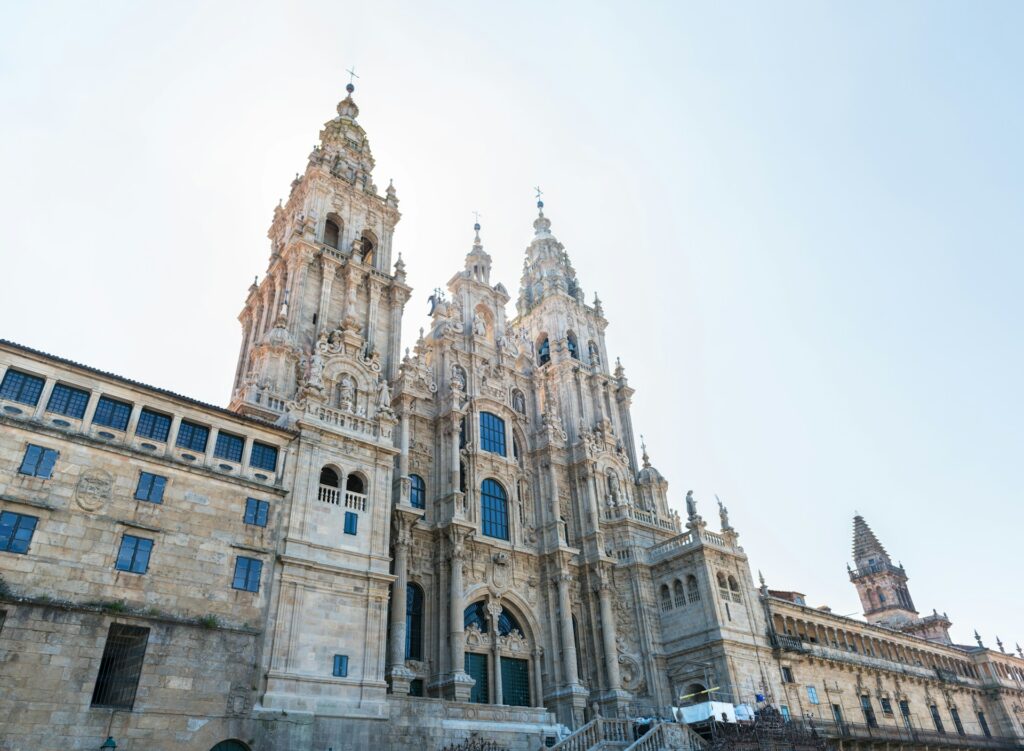
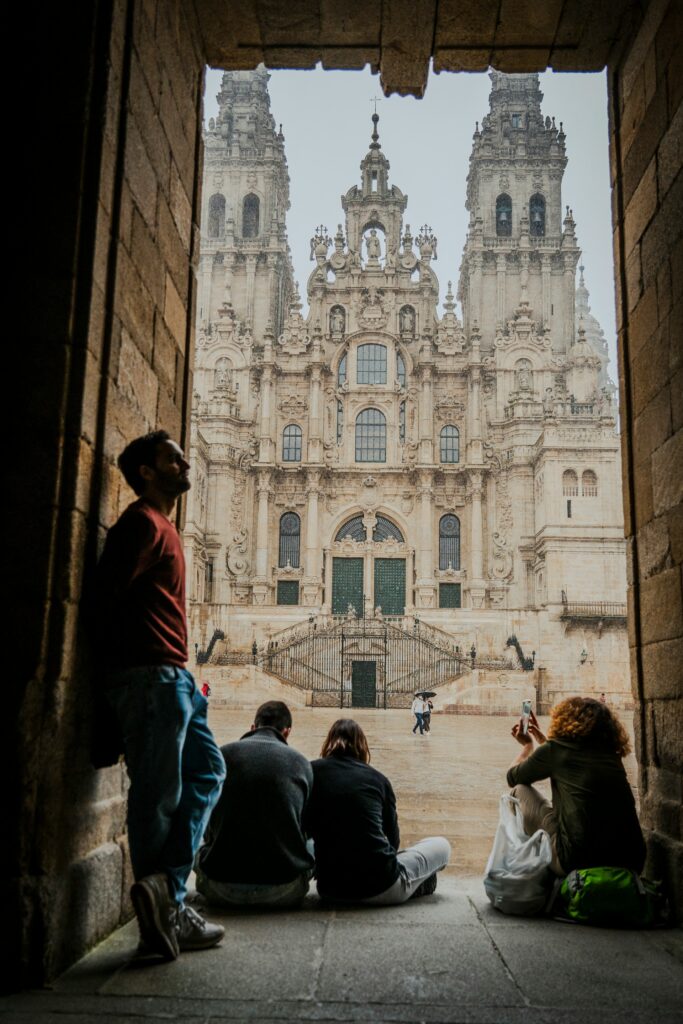

Santiago de Compostela, the starting point of the Camino de Finisterre which plots a course from Santiago to Finisterre, is a city steeped in history and spirituality.
Known for its iconic Cathedral of Santiago de Compostela, this city marks the culmination of the Camino de Santiago and the beginning of a new journey. It’s a place to reflect on the journey so far and prepare for the continuation to the coast.
Attend the Pilgrim’s Mass at the cathedral to witness the swinging of the Botafumeiro, a giant incense burner, which is a truly awe-inspiring experience.
Highlights:
- Cathedral of Santiago de Compostela: The starting point for many, this iconic cathedral is the culmination of the Camino de Santiago. Pilgrims often attend the Pilgrim’s Mass and witness the swinging of the Botafumeiro, a giant incense burner.
- Old Town: A UNESCO World Heritage site, the old town is a maze of narrow streets, historic buildings, and vibrant squares.
Negreira
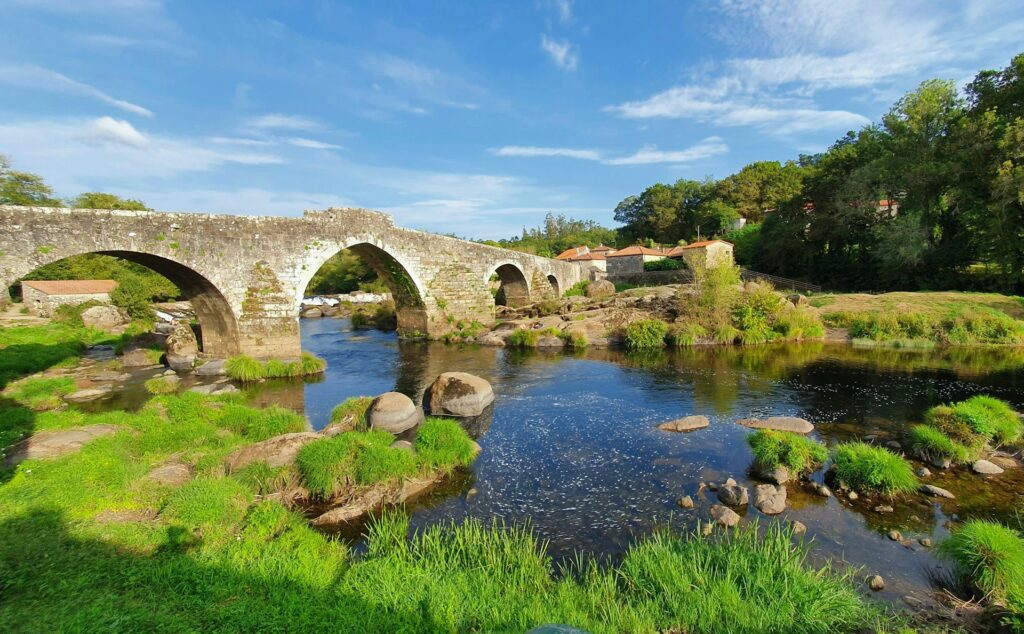
Negreira is the first major stop after leaving Santiago. It offers a gentle introduction to the rural landscapes and historical sites that characterise the Camino de Finisterre.
Take a moment to explore the medieval Pazo do Cotón, an atmospheric castle, and enjoy a peaceful walk along the picturesque Bridge of Ponte Maceira over the Tambre River.
Distance from Santiago de Compostela: 21 km (13 miles)
Estimated Walking Time: 5-6 hours
Highlights:
- Pazo do Cotón: A medieval palace that stands as a testament to the town’s historical significance.
- Bridge of Ponte Maceira: A picturesque medieval bridge over the Tambre River, surrounded by lush scenery.
Olveiroa
Olveiroa is a small, tranquil village that provides a peaceful respite for pilgrims. It’s a place to rest and recharge before tackling the more challenging sections of the route.
Stay at one of the welcoming albergues and try the local cuisine, particularly the hearty Galician stews, like caldo gallego, that are perfect for replenishing your energy.
Distance from Negreira: 33 km (20.5 miles)
Estimated Walking Time: 8-9 hours
Highlights:
- Rural Galician Architecture: Traditional stone houses and granaries (hórreos) dot the landscape.
- Hospitality: Known for its welcoming albergues (pilgrim hostels) and local cuisine.

Cee
Cee is one of the larger towns along the route, offering more amenities and services. It’s also the gateway to the coastal section of the Camino de Finisterre.
Spend some time relaxing at Praia de Estorde, a stunning beach where you can enjoy the Atlantic Ocean and unwind after a day of walking.
Distance from Olveiroa: 19 km (12 miles)
Estimated Walking Time: 4-5 hours
Highlights:
- Praia de Estorde: A beautiful beach where pilgrims can relax and enjoy the Atlantic Ocean.
- Church of Santa María da Xunqueira: A historic church with stunning architecture and a serene atmosphere.
Read: Where to eat along the Camino de Frances
Corcubión
Corcubión is a picturesque coastal town that provides a glimpse into the maritime culture of Galicia. It’s a perfect place to enjoy fresh seafood and take in the coastal scenery. Take a leisurely stroll through the historic streets to fully appreciate the town’s charm.
Distance from Cee: 3 km (1.9 miles)
Estimated Walking Time: 1 hour
Highlights:
- Historic Center: Cobblestone streets, traditional houses, and a charming harbor.
- Church of San Marcos: A beautiful church with a rich history and stunning views of the sea.

Finisterre (Fisterra)
Finisterre, often considered the end of the world, is the iconic endpoint of the Camino de Finisterre. With its dramatic cliffs, lighthouse, and the 0.00 km marker, it offers a profound sense of completion for pilgrims.
Participate in the ritual of burning a piece of clothing or leaving a memento at Cape Finisterre to symbolise the end of your journey and the beginning of a new chapter.
Distance from Corcubión: 14 km (8.7 miles)
Estimated Walking Time: 3-4 hours
Highlights:
- Cape Finisterre: The iconic end point of the Camino de Finisterre, marked by the lighthouse and the 0.00 km marker. Pilgrims often perform the ritual of burning a piece of clothing or leaving a memento to symbolize the end of their journey.
- Praia da Langosteira: A long, sandy beach perfect for reflection and relaxation.
- Church of Santa María das Areas: A historic church with a revered statue of Christ.
Muxía (Optional Extension)
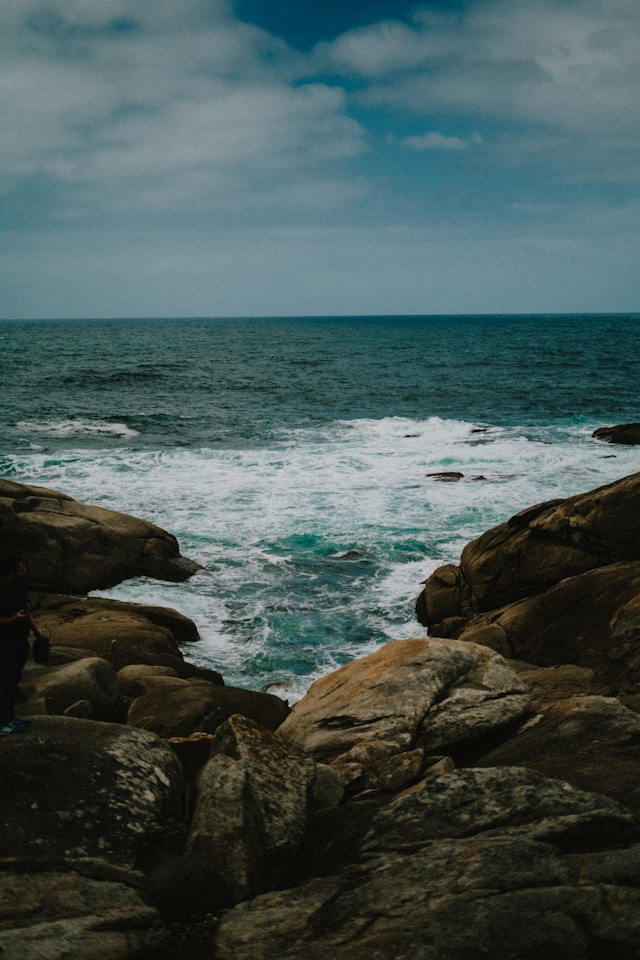
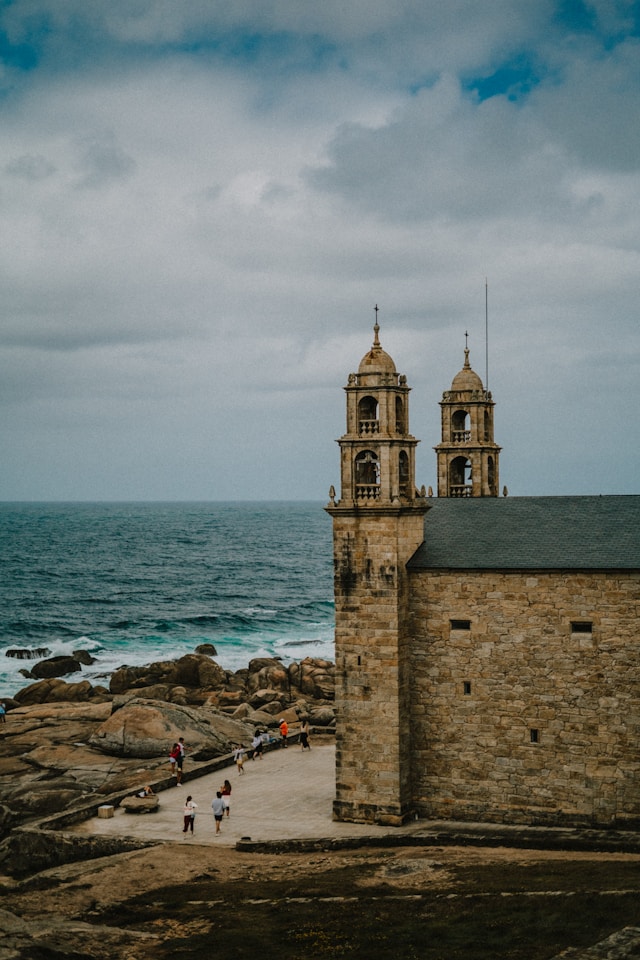
Many pilgrims choose to extend their journey to Muxía, another coastal town with deep spiritual significance. The rugged beauty and transcendental atmosphere make it a worthy addition to the Camino de Finisterre. The Sanctuary of Our Lady of the Boat and the mystical stones add to its allure.
Visit the Pedra de Abalar and Pedra dos Cadrís, sacred stones believed to have healing properties, and take in the breathtaking views of the rocky coastline.
Distance from Finisterre: 29 km (18 miles)
Estimated Walking Time: 7-8 hours
Highlights:
- Sanctuary of Our Lady of the Boat (Nosa Señora da Barca): A beautiful church perched on the rocky coastline, associated with numerous legends and miracles.
- Pedra de Abalar and Pedra dos Cadrís: Sacred stones with mythical significance, believed to have healing properties.
The Bottom Line
The Camino de Finisterre is a journey of discovery, reflection, and connection with nature. Each stop along the way offers unique experiences and insights, from the historic streets of Santiago de Compostela to the dramatic cliffs of Finisterre.
Whether you’re seeking spiritual growth, physical challenge, or simply a deeper connection with the world around you, the Camino de Finisterre provides a path worth walking.





